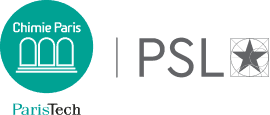Starving Cancer Cells of Energy: An Innovative Nanozyme Developed at Chimie ParisTech – PSL

A major breakthrough in the fight against solid tumors: the 2PM team at Chimie ParisTech – PSL has developed a metal-free nanozyme capable of disrupting cancer cell metabolism, even in low-oxygen environments.
An artificial enzyme to trigger an “energy crash” in cancer cells. Cancer cells need energy to grow. To cut off their fuel supply, Min-Hui Li and her PhD students of the Plasma Processes and Microsystems (2PM) team at the Institut de Recherche de Chimie Paris (CNRS, Chimie ParisTech – PSL) has developed a biomimetic metal-free nanozyme that mimics the action of a natural enzyme and is activated by light. This nanozyme works by disrupting the balance between NAD⁺ and NADH — key molecules to cellular metabolism — triggering an energy imbalance that proves fatal to cancer cells.
An efficient technology in hypoxic conditions. This innovative system is built from polymersomes self-assembled from polymers incorporating AIE (Aggregation-Induced Emission) molecules which are redox reaction photocatalysts. Unlike conventional photocatalysts, this nanozyme functions without oxygen neither other electron acceptors, thanks to a unique mechanism where photocatalysts recycle through electron transfer among themselves. This O₂-independent catalysis is particularly valuable in treating solid tumors, which often exist in hypoxic microenvironments where many therapies fail.
A targeted and biocompatible approach. To boost therapeutic efficiency while minimizing side effects, the nanozyme is coated with folate-modified red-blood-cell membranes, enabling precise targeting of cancer cells. Successfully tested both in vitro and in vivo (on a mouse tumor model), this strategy induces an energy crisis in tumors and significantly slows their progression.
This research is the result of a collaboration between Chimie ParisTech – PSL (IRCP) and Jinan University (Guangzhou, China). It highlights the potential of advanced chemistry to design innovative, targeted cancer therapies.
Learn more. Yandong Ma, Yakui Deng, Wei Xue, Xin Ji, Min-Hui Li, An Anaerobic Biomimetic Metal-free AIE Polymersome Nanozyme as NADH Oxidase Mimic for Photocatalytic Tumor Suppression by Impairing Cancer Cell Energy Metabolism under Hypoxia, Journal of the American Chemical Society (JACS), accepted on July 7, 2025. https://doi.org/10.1021/jacs.5c06533.
1 Chimie ParisTech-PSL, PSL University, CNRS, Institut de Recherche de Chimie Paris, UMR8247, 75005 Paris, France
2 Key Laboratory of Biomaterials of Guangdong Higher Education Institutes, Engineering Technology Research Center of Drug Carrier of Guangdong, Department of Biomedical Engineering, Jinan University, Guangzhou 510632, China
See also previous related work. Nian Zhang, Sylvain Trépout, Hui Chen, Min-Hui Li, AIE Polymer Micelle/Vesicle Photocatalysts Combined with Native Enzymes for Aerobic Photobiocatalysis. Journal of the American Chemical Society (JACS), 2022, 145(1), 288-299. https://doi.org/10.1021/jacs.2c09933
To learn more about Chemistry Research Institute of Paris (IRCP)
